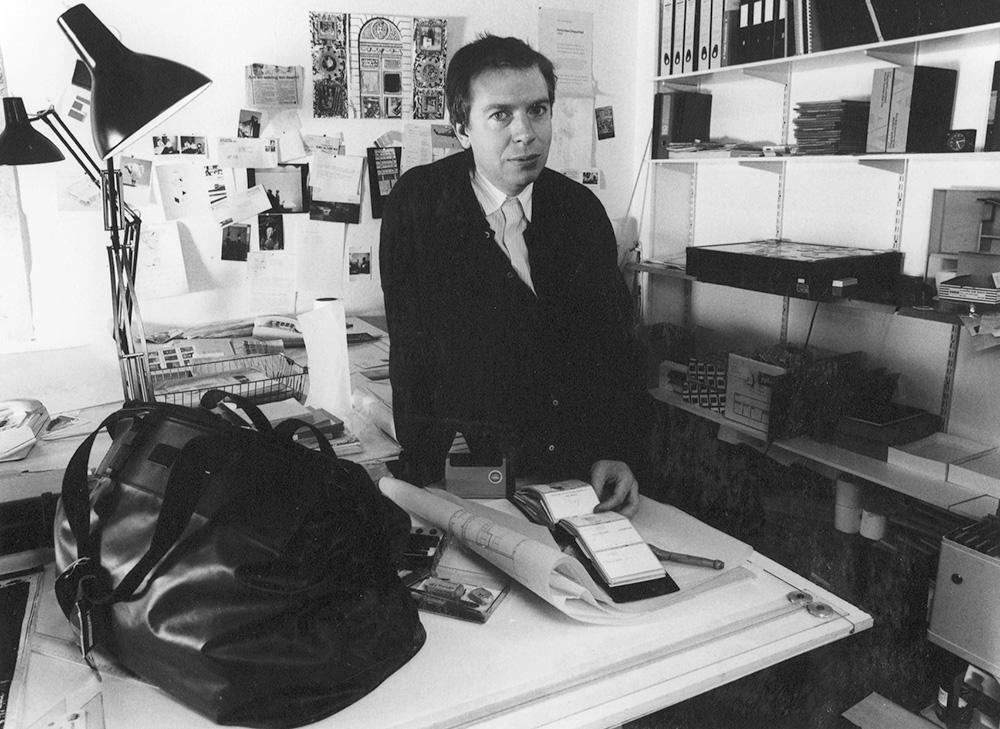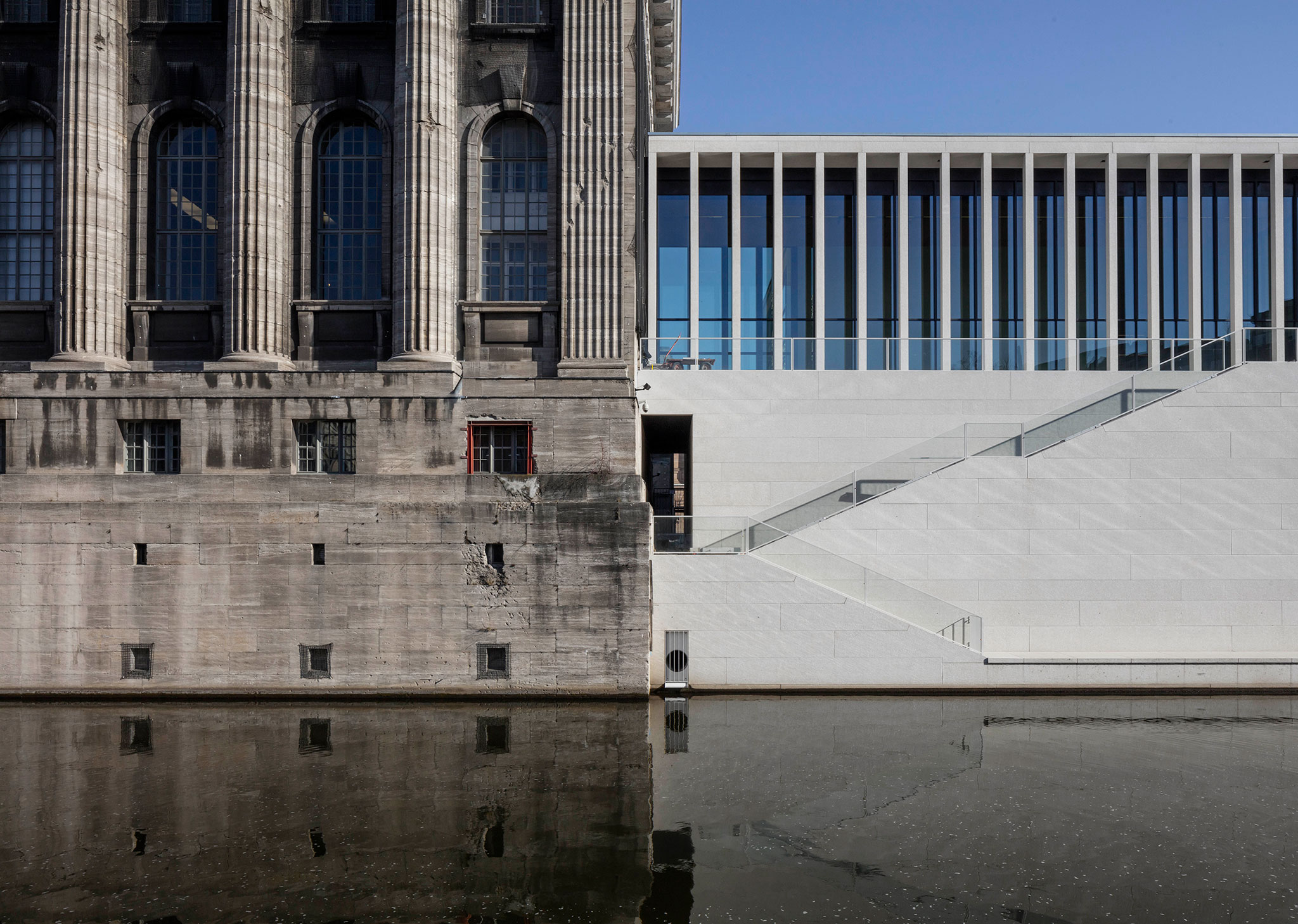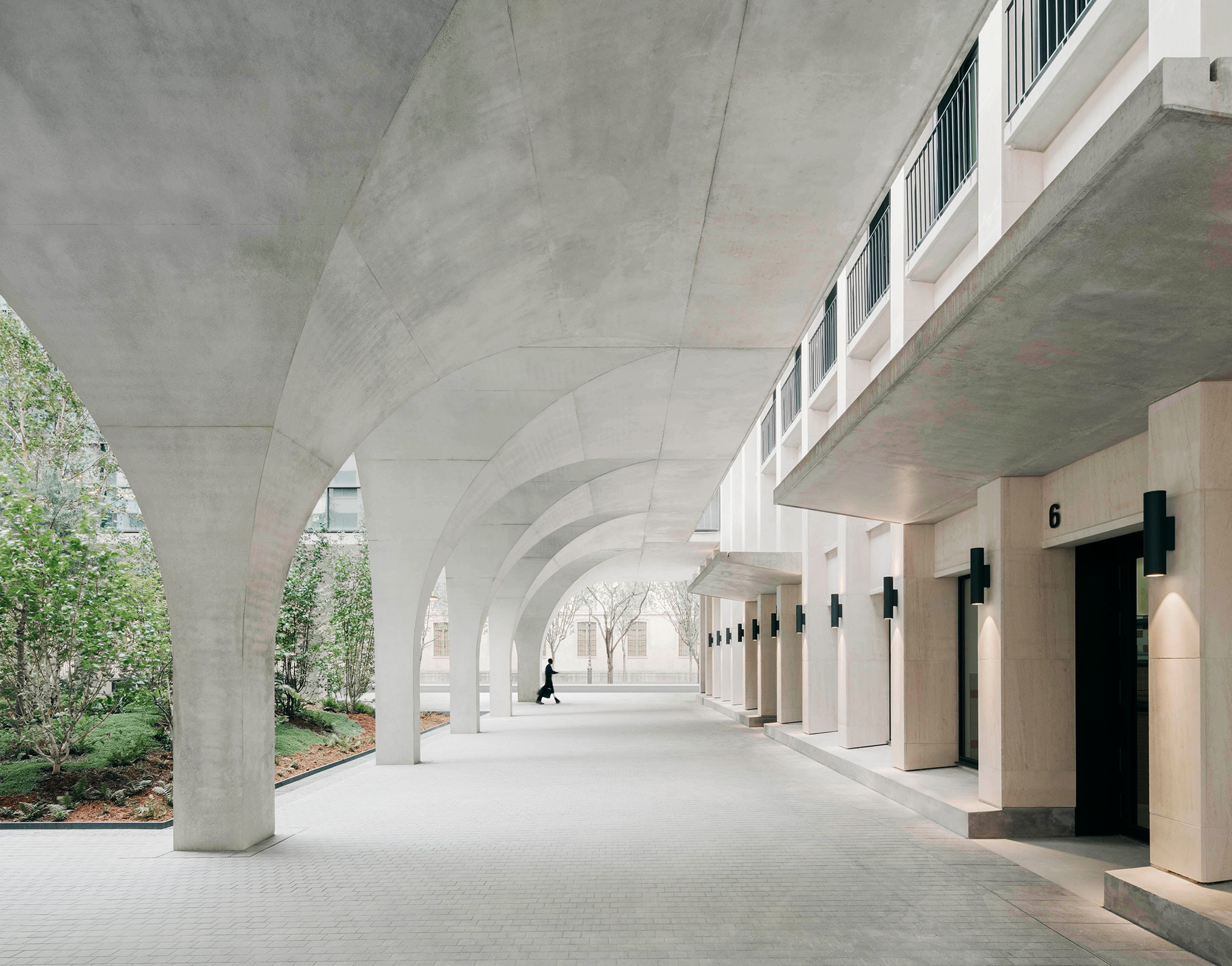Chipperfield graduated from the Kingston School of Art in 1976 and the Architectural Association School of Architecture in London in 1980, where he learned to become a critic, reenvisioning the potential of each element to stretch every project beyond the task itself.
He worked under Douglas Stephen, Norman Foster, 1999 Pritzker Prize Laureate, and the late Richard Rogers, 2007 Pritzker Prize Laureate, before founding David Chipperfield Architects in London in 1985, which later expanded to additional offices in Berlin (1998), Shanghai (2005), Milan (2006) and Santiago de Compostela (2022).

Photograph courtesy of David Chipperfield.
His early career began on Sloane Street, designing a retail interior for the late Issey Miyake, leading to architectural work in Japan. The River and Rowing Museum (Henley-on-Thames, United Kingdom, 1989–1997) marked his inaugural building in his native country. He continued his work abroad, to early success in the reconstruction and reinvention of the Neues Museum (Berlin, Germany, 1993–2009) and the newly constructed James-Simon-Galerie (Berlin, Germany, 1999–2018). He credits his heightened sense of responsibility to these formative professional years, building in other countries for other cultures.
Collaboration has always been fundamental to his practice, upholding with certitude that, “the reality is that good buildings come from good process and good process means that you are engaging and collaborating with different forces.” During four decades, he has produced over one hundred works, which are expansive in typology and geography, ranging from civic, cultural and academic buildings to residences and urban master planning throughout Asia, Europe and North America.

James-Simon-Galerie, photograph courtesy of Ute Zscharnt for David Chipperfield Architects.
As his practice grew more prolific, so did his advocacy for social and environmental welfare, censuring the commodification of architecture that serves global power rather than local society, and the interrelated lack of permanence that contributes to the climate crisis.
Over recent years, he has developed a profound fondness and devotion to the community of Galicia, one of Spain’s poorest regions that paradoxically prosper with a high quality of life. Establishing the Fundación RIA in 2017, Chipperfield sponsors research, promotes ideas and aligns future development fostering locally-focused protection of the natural and built environments related to global challenges along the coast of the Ría de Arousa.

Morland Mixité Capitale, photograph courtesy of Simon Menges.
Chipperfield has received awards including the RIBA Royal Gold Medal (United Kingdom, 2011), the European Union Prize for Contemporary Architecture—the Mies van der Rohe Award (Spain, 2011) and the Heinrich Tessenow Medal (Germany, 1999). He was elected to the Royal Academy of Arts (2008), awarded the Order of Merit of the Federal Republic of Germany (2009), and the Japan Art Association’s Praemium Imperiale for Architecture (Japan, 2013), The Netherlands’ Sikkens Prize ( 2015) and is a member of the Royal Institute of British Architects and an honorary fellow of the American Institute of Architects and the Bund Deutscher Architekten.
Chipperfield was the curator of the 13th Biennale Architettura in 2012, presenting the theme, Common Ground; selected as the architectural mentor for the Rolex Mentor and Protégé Arts Initiative in 2016–2017; and the guest editor for Domus in 2020. He was a Professor of Architecture at the Staatliche Akademie der Bildenden Künste, Stuttgart from 1995 to 2001 and Norman R. Foster Visiting Professor of Architectural Design at Yale University in 2011.
He was appointed as Commander of the Order of the British Empire in 2004, knighted in 2010 and appointed to the Order of the Companions of Honour in 2021.




































![Balkrishna Doshi. 2018 Pritzker Architecture Prize [II] Balkrishna Doshi. 2018 Pritzker Architecture Prize [II]](/sites/default/files/styles/mopis_home_news_category_slider_desktop/public/lead-images/metalocus_pritzker_2018_bvd_headshot_08.jpg?h=5c593260&itok=3D0AxMIW)



